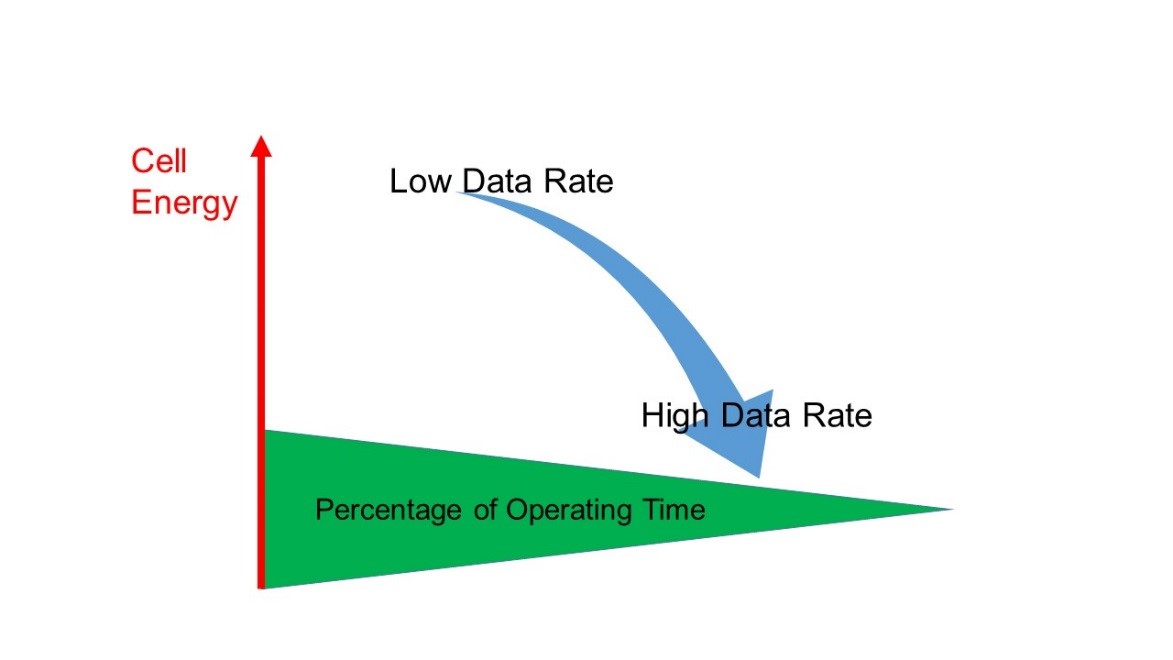
The same pattern follows in the low-power DRAM main memory that supports the applications processor – most of the time is spent operating at a low data rate, but there are short periods of high data-rate transfers to the processor.

Thus, long periods of passive activity characterize the duty cycle of the phone’s applications processor, as the operating system and embedded radio modules tick over in the background, punctuated by short bursts of intense activity.

The phone rests in our pocket, on the desk, or at our bedside waiting for us to make a call, launch an app, or watch a video stream. We spend most of the time not actively using it while powered-on. Even so, for most users, most of the time, the mobile phone remains in a quiescent state. So let's be safe and call it 5 month of operation time.Today, the mobile phone has become the consumer’s favorite device, carried everywhere and never out of reach morning, noon, and night. Both my ESP8266 with DS18B20 reporting temperature every 15 minutes were running 2 AA batteries for almost 6 months. And expect them to work for at least 6 months before batteries will be depleted. Right now, I have 2 ESP8266 ESP-01 with DS18B20 reporting temperature every 15 minutes running on 2 AA batteries for 5 weeks. Just rip it out with a knife or desolder it you like to do things right.Īfter this is done, deep sleep can be entered (when using Arduino) using:ĮSP.deepSleep( * 1000000) Īfter defined period of time, ESP8266 will reboot itself and do setup phase. Without this LED, board would draw only about 80uA when in deep sleep. The fact, that XPD_DCDC is the last pin on the bottom edge of MCU (antenna facing left) makes it much simpler. It's doable with a decent soldering iron and some training. To fix it, you would have to solder thin wire between XPD_DCDC and RESET pin just like on a picture below: XPD_DCDC MCU pin in not connected to RESET pin. There is one catch: ESP-01 is capable to enter deep sleep, but unable to restart and resume operation. When in deep sleep, ESP8266 disables almost all of its functions and reboots after specified period of time. There is a way to make ESP-01 work for months using something called deep sleep mode.

Set of 2 AA batteries would be drained in less than a day. Minimal power consumption of about 70mA when doing nothing and above 100mA when when transferring data makes it rather impossible to use it on battery power for a longer period of time. Amazing ESP8266 ESP-01 WiFi boards have pretty irritating problem: theirs power consumption is pretty high.


 0 kommentar(er)
0 kommentar(er)
